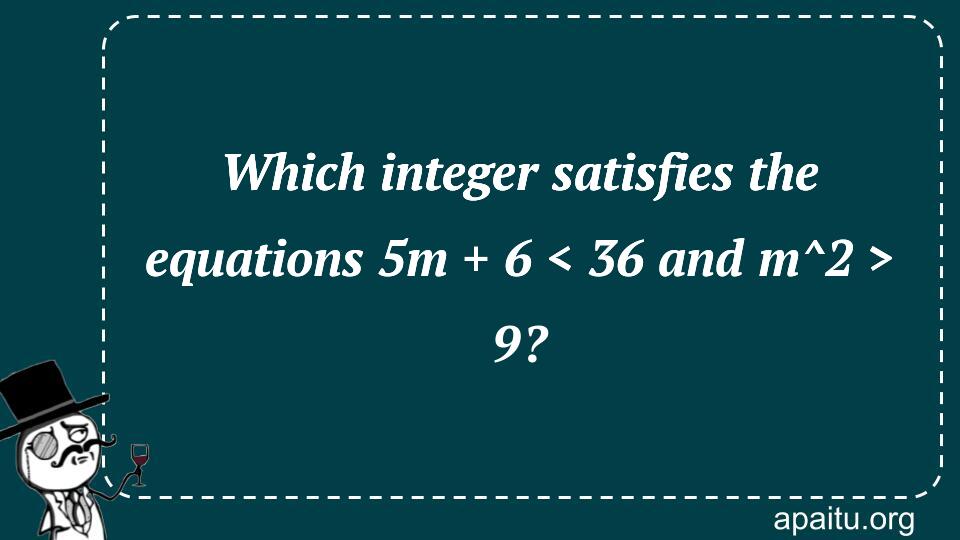Question
Here is the question : WHICH INTEGER SATISFIES THE EQUATIONS 5M + 6 < 36 AND M^2 > 9?
Option
Here is the option for the question :
- 2
- 4
- 7
- 9
The Answer:
And, the answer for the the question is :
4
Explanation:
Find a range for your responses by solving each problem independently. The variable m can be any number less than 6 by first subtracting 6 from both sides of the equation 5m + 6 36, and then dividing the result by 5. If you take the square root of both sides of the second equation, m2 > 9, then m can be any positive integer greater than 3. Since the correct answer must be between 3 and 6, we can eliminate 1 and 2 and leave only 4.
